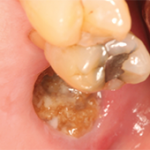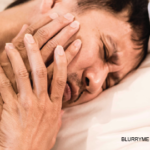Results support the use of such an intervention in primary care. Almost half (n=244, 43.3%) of those contacted had a bone scan. Table 1 (p. 20) shows the results of those found to have osteoporosis, advanced osteopenia (defined as a T-score of less than -2.0), less severe osteopenia, and normal bone mass, as well as the follow-up activities. These numbers show that 72 women (29.5%) of those screened had clinically significant bone loss requiring pharmacological therapy. The treatment criteria of the National Osteoporosis Foundation indicate that pharmacological therapy should be started for those with a T-score equal to or less than -2.5 of the hip (femoral neck) or spine.6
This prevention model offers a feasible, positive approach to increasing patient participation in a potentially preventive activity such as DXA screening. The intervention was found to be valuable when outcomes were measured, and it was viewed as beneficial by the PCPs. The notes following Table 1 show that most patients received clinical follow-up, though nine of those with advanced osteopenia did not. Lack of follow-up was most often related to patients not following advice to make an appointment or to resident physicians not communicating with patients. In addition to increasing the preventive screening, such an intervention could promote education about the health-related condition while, at the same time, allowing more time during the office visit for discussion of the person’s more immediate health issues. The authors note that additional testing is needed in a variety of practice environments.
Implementation of such an intervention could be planned individually for different environments (e.g., rheumatology clinics and private practices). Because the cost of mailing and having staff available for calling may be prohibitive without additional funding, settings can at least take steps to insure that patients receive information as they make office visits. For example, a nurse or nurse practitioner could be designated to make a quick risk assessment and provide counseling before or after the patient sees the physician. Discussion might be prompted by signs placed in the waiting area (in English and other appropriate languages). In addition to the USPSTF recommendations, cost considerations should also be discussed with patients. Medicare will cover DXA every two years3; other insurers may vary. Not only women should be targeted; men with risk factors (e.g., aged 70 and older, low weight, and minimal exercise) should also be assessed.7
References
- Denberg TD, Lin CT, Myers BA, Cashman JM, Kutner JS, Steiner JF. Improving patient care through health-promotion outreach. J Ambul Care Manage. 2008;31:54-65.
- United States Preventive Service Task Force. Screening for Osteoporosis in Postmenopausal Women. Release Date: September 2002 [online]. Available at www.ahrq.gov/clinic/uspstf/uspsoste.htm. Accessed March 4, 2009.
- National Osteoporosis Foundation. Fast Facts on Osteoporosis. 2008 [online]. Available at www.nof.org/osteoporosis/diseasefacts.htm Accessed March 4, 2009.
- Burge R, Dawson-Hughes B, Solomon DH, Wong JB, King A, Tosteson A. Incidence and economic burden of osteoporosis-related fractures in the United States, 2002–2005. J Bone Miner Res. 2007;22:465-475.
- Johnell O, Kanis JA. An estimate of the worldwide prevalence and disability associated with osteoporotic fractures. Osteoporos Int. 2006;17:1726-1733.
- National Osteoporosis Foundation. Clinician’s Guide to Prevention and Treatment of Osteoporosis. Washington, D.C.: National Osteoporosis Foundation, 2008 [online]. Available at www.nof.org/professionals/NOF_Clinicians_Guide.pdf. Accessed March 5, 2009.
- Qaseem A, Snow V, Shekelle P, Hopkins R Jr, Forciea MA, Owens DK. Screening for osteoporosis in men: A clinical practice guideline from the American College of Physicians. Ann Intern Med. 2008;148:680-684.

